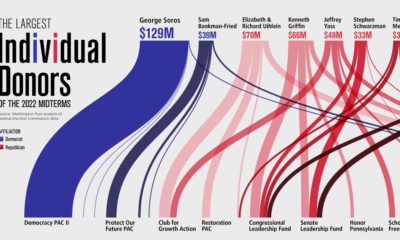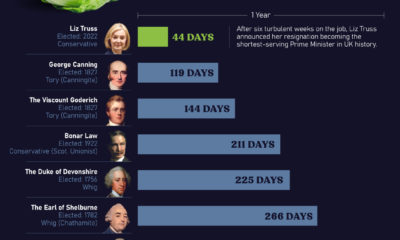This famous real estate adage also matters in mining. After all, it’s an industry that is all about the geology—but beyond the physical aspects and the location of a mineral deposit, there are also social and environmental factors that create a mining jurisdiction.
Common Mistakes With Jurisdiction
We’ve partnered with Eclipse Gold Mining on an infographic series to show you how to avoid common mistakes when evaluating and investing in mining exploration stocks. Part 3 of the series focuses on six signals investors can use to gauge a company’s preparedness for the jurisdictions they operate in.
View the two other parts of this series so far, covering mistakes made in choosing the team as well as those made with a company’s business plan.
#1: Geological Potential: Methodical Prospecting or Wild Goose Chase?
It all starts with a great drill result, but even these can be “one-off” anomalies.
Mineral exploration is a methodical process of drawing a subsurface picture with the tip of a drill bit. A mineral discovery is the cumulative effort of years of research and drilling.
The key to reducing this geological risk is to find a setting that has shown previous potential and committing to it. Typically, a region is known to have hosted other great discoveries or shares a geology similar to other mining districts.
Signs of Methodical Prospecting:
Lots of geological indicators Potential for further discovery Sound science
#2: Legal Environment: Well-Paved Path or Minotaur’s Maze?
Now that you have identified a region with the prospective geology you think could host a discovery, a company will have to secure the permits to explore and operate any further. However, a management team that cannot navigate a country’s bureaucracy will face delays and obstacles, costing investors both time and money. Without clear laws and competent management, a mining company’s best laid plans become lost in a maze with legal monsters around every legal corner. Signs of a Well-Paved Highway:
Existing laws encourage mining investment Relatively low bureaucracy Well-established permitting process Legacy of mining contributing to economy
#3: Politics: Professional Politics or Banana Republics?
A good legal framework is often the outcome of politics and stable governance—however so is a difficult legal framework.
The political stability of a nation can turn on one election and so can the prospects for developing a mine. An anti-mining leader can halt a mining project, or a pro-mining leader can usher forward one.
A positive national viewpoint on mining may be enough to lure investment dollars, but local politics may determine the success of a mining company.
Signs of Professional Politics:
Positive history with mining companies Politically stable jurisdiction Rule of law respected Changes in government have little effect on the mining industry
#4: Infrastructure & Labor: Modern or Medieval
Sometimes it is the discovery of valuable minerals that spurs national development, but this can also happen the other way around, in which development can encourage mineral discovery.
A mining company looking to build a new mine in a country with a tradition of mining will have an easier time. Access or lack thereof to modern machinery and trained employees will determine how much money will be needed.
That said, if a company is looking to develop a mining project in a new mining region, they must be ready to help create the skills and infrastructure it needs to mine.
Signs of a Modern Jurisdiction:
Developed roads to access and support operations Trained labor for staffing and development Well-established grid lines and back-up power systems
#5: Community: Fostering Friendship or Sowing Enemies
Mining operations have a significant impact on the local community. Good companies look to make mutually beneficial partnerships of equals with local communities. Ignoring or failing to respect the local community will jeopardize a mining project at every stage of its mine life. A local community that does not want mining to occur will oppose even the best laid plans. Signs of a Friendly Relations:
Operations bring community together Local history shows support for mining Understanding of local concerns and regional variety Company contributes to economic growth and health of the community
#6: Environment: Clean Campsite or One Night Party
There is no way around it: mining impacts the environment and local ecosystems. But, mining operations are a blip on the radar when it comes to Earth’s timeline. Mine sites can again become productive ecosystems, if a company has the capacity and plan to mitigate mining’s impacts at every stage of the life of a mine—even beyond the life of a mine. Signs of a Clean Campsite:
Development plan mitigates environmental damage Well-planned closure and remediation Understand how communities use their environment
Bringing it together: ESG Investing
These six points outlined above point towards a more complete picture of the impacts of a mining project. Currently, this falls under what is labeled as Environmental, Social and Governance “ESG” standards.
Mining companies are the forefront of a big push to adopt these types of considerations into their business, because they directly affect natural and human environments.
ESG is no longer green wash, especially for the mining industry. Companies that understand and apply these concepts in their business will have better outcomes in the jurisdictions they operate within, hopefully offering investors a more successful venture.
Geology does not change on the human time scale, but bad management can quickly lose a good project and investor’s money if they do not pay attention to the other attributes of a jurisdiction.
on
Did you know that nearly one-fifth of all the gold ever mined is held by central banks?
Besides investors and jewelry consumers, central banks are a major source of gold demand. In fact, in 2022, central banks snapped up gold at the fastest pace since 1967.
However, the record gold purchases of 2022 are in stark contrast to the 1990s and early 2000s, when central banks were net sellers of gold.
The above infographic uses data from the World Gold Council to show 30 years of central bank gold demand, highlighting how official attitudes toward gold have changed in the last 30 years.
Why Do Central Banks Buy Gold?
Gold plays an important role in the financial reserves of numerous nations. Here are three of the reasons why central banks hold gold:
Balancing foreign exchange reserves Central banks have long held gold as part of their reserves to manage risk from currency holdings and to promote stability during economic turmoil. Hedging against fiat currencies Gold offers a hedge against the eroding purchasing power of currencies (mainly the U.S. dollar) due to inflation. Diversifying portfolios Gold has an inverse correlation with the U.S. dollar. When the dollar falls in value, gold prices tend to rise, protecting central banks from volatility. The Switch from Selling to Buying In the 1990s and early 2000s, central banks were net sellers of gold. There were several reasons behind the selling, including good macroeconomic conditions and a downward trend in gold prices. Due to strong economic growth, gold’s safe-haven properties were less valuable, and low returns made it unattractive as an investment. Central bank attitudes toward gold started changing following the 1997 Asian financial crisis and then later, the 2007–08 financial crisis. Since 2010, central banks have been net buyers of gold on an annual basis. Here’s a look at the 10 largest official buyers of gold from the end of 1999 to end of 2021: Rank CountryAmount of Gold Bought (tonnes)% of All Buying #1🇷🇺 Russia 1,88828% #2🇨🇳 China 1,55223% #3🇹🇷 Türkiye 5418% #4🇮🇳 India 3956% #5🇰🇿 Kazakhstan 3455% #6🇺🇿 Uzbekistan 3115% #7🇸🇦 Saudi Arabia 1803% #8🇹🇭 Thailand 1682% #9🇵🇱 Poland1282% #10🇲🇽 Mexico 1152% Total5,62384% Source: IMF The top 10 official buyers of gold between end-1999 and end-2021 represent 84% of all the gold bought by central banks during this period. Russia and China—arguably the United States’ top geopolitical rivals—have been the largest gold buyers over the last two decades. Russia, in particular, accelerated its gold purchases after being hit by Western sanctions following its annexation of Crimea in 2014. Interestingly, the majority of nations on the above list are emerging economies. These countries have likely been stockpiling gold to hedge against financial and geopolitical risks affecting currencies, primarily the U.S. dollar. Meanwhile, European nations including Switzerland, France, Netherlands, and the UK were the largest sellers of gold between 1999 and 2021, under the Central Bank Gold Agreement (CBGA) framework. Which Central Banks Bought Gold in 2022? In 2022, central banks bought a record 1,136 tonnes of gold, worth around $70 billion. Country2022 Gold Purchases (tonnes)% of Total 🇹🇷 Türkiye14813% 🇨🇳 China 625% 🇪🇬 Egypt 474% 🇶🇦 Qatar333% 🇮🇶 Iraq 343% 🇮🇳 India 333% 🇦🇪 UAE 252% 🇰🇬 Kyrgyzstan 61% 🇹🇯 Tajikistan 40.4% 🇪🇨 Ecuador 30.3% 🌍 Unreported 74165% Total1,136100% Türkiye, experiencing 86% year-over-year inflation as of October 2022, was the largest buyer, adding 148 tonnes to its reserves. China continued its gold-buying spree with 62 tonnes added in the months of November and December, amid rising geopolitical tensions with the United States. Overall, emerging markets continued the trend that started in the 2000s, accounting for the bulk of gold purchases. Meanwhile, a significant two-thirds, or 741 tonnes of official gold purchases were unreported in 2022. According to analysts, unreported gold purchases are likely to have come from countries like China and Russia, who are looking to de-dollarize global trade to circumvent Western sanctions.
There were several reasons behind the selling, including good macroeconomic conditions and a downward trend in gold prices. Due to strong economic growth, gold’s safe-haven properties were less valuable, and low returns made it unattractive as an investment.
Central bank attitudes toward gold started changing following the 1997 Asian financial crisis and then later, the 2007–08 financial crisis. Since 2010, central banks have been net buyers of gold on an annual basis.
Here’s a look at the 10 largest official buyers of gold from the end of 1999 to end of 2021:
Source: IMF
The top 10 official buyers of gold between end-1999 and end-2021 represent 84% of all the gold bought by central banks during this period.
Russia and China—arguably the United States’ top geopolitical rivals—have been the largest gold buyers over the last two decades. Russia, in particular, accelerated its gold purchases after being hit by Western sanctions following its annexation of Crimea in 2014.
Interestingly, the majority of nations on the above list are emerging economies. These countries have likely been stockpiling gold to hedge against financial and geopolitical risks affecting currencies, primarily the U.S. dollar.
Meanwhile, European nations including Switzerland, France, Netherlands, and the UK were the largest sellers of gold between 1999 and 2021, under the Central Bank Gold Agreement (CBGA) framework.
Which Central Banks Bought Gold in 2022?
In 2022, central banks bought a record 1,136 tonnes of gold, worth around $70 billion. Türkiye, experiencing 86% year-over-year inflation as of October 2022, was the largest buyer, adding 148 tonnes to its reserves. China continued its gold-buying spree with 62 tonnes added in the months of November and December, amid rising geopolitical tensions with the United States. Overall, emerging markets continued the trend that started in the 2000s, accounting for the bulk of gold purchases. Meanwhile, a significant two-thirds, or 741 tonnes of official gold purchases were unreported in 2022. According to analysts, unreported gold purchases are likely to have come from countries like China and Russia, who are looking to de-dollarize global trade to circumvent Western sanctions.













